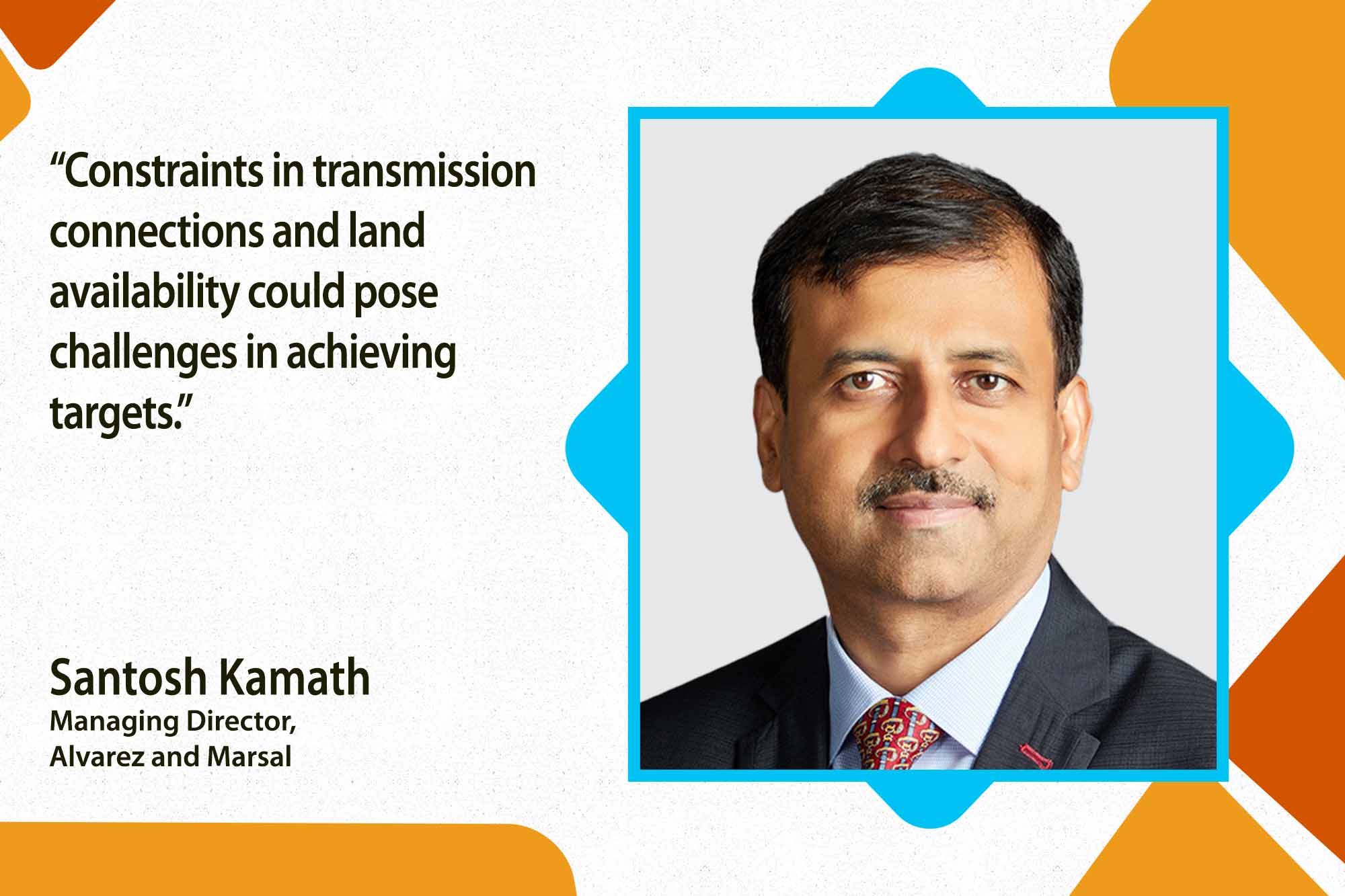India makes remarkable stride in RE despite inadequate supply chain
By EPR Magazine Editorial February 2, 2024 2:17 pm IST
By EPR Magazine Editorial February 2, 2024 2:17 pm IST

Constraints in transmission connections and land availability could pose challenges in achieving targets.
India has made commendable strides in the renewable energy sector, all because of the collaborative efforts of various stakeholders.India is one of the world’s fastest-growing economies evident in the 8 percent national power demand growth seen in 2023–24.
Renewable energy expansion
The government has set an ambitious 2030 strategy that focuses on significant renewable energy expansion.With current renewables composition at nearly 22 percent (incl. hydro) of the power mix, the goal is to take it to 45 percent by 2030.
Over 80 percent of new capacity addition is coming in the renewables sector, while the investments in the coal sector has reduced in the recent past. In the short term, we will need to correct this, as more coal capacity will be needed to meet our growing demand till such time as our renewable energy supply chains and storage technologies ramp up.Overcoming challenges
The challenges persist such as the inadequate solar industry supply chain and import dependence.Further we need to add much more of wind energy generation capacity to enable us to meet power demand during the non-solar hours when wind comes in quite well. We will need to add nearly 30 GW over the next 3 years in wind capacity, however the current rate of addition is only 4-5 GW per year due to supply chain and project execution constraints.Project execution faces challenges in land availability especially for wind power and transmission connectivity at CTU level.
Grid stability is crucial as renewables increase,The Central Electricity Authority (CEA) has identifieds the need for 70 gigawatts of storage over 4-5 hours per day, totaling to nearly 350 gigawatt hours by 2032 to address this. We need to move faster on this aspect so that we don’t fall short. In addition to storage, there is a need to focus on and supply and/demand flexibility to effectively handle increasing renewables.Supply flexibility in terms of flexible operation of coal plants and demand side flexibility by using technologies and business models such as virtual power plants, smart charging and demand-response programs need to be promoted more aggressively.
Spokesperson:Santosh Kamath, Managing Director, at Alvarez and Marsal
We use cookies to personalize your experience. By continuing to visit this website you agree to our Terms & Conditions, Privacy Policy and Cookie Policy.